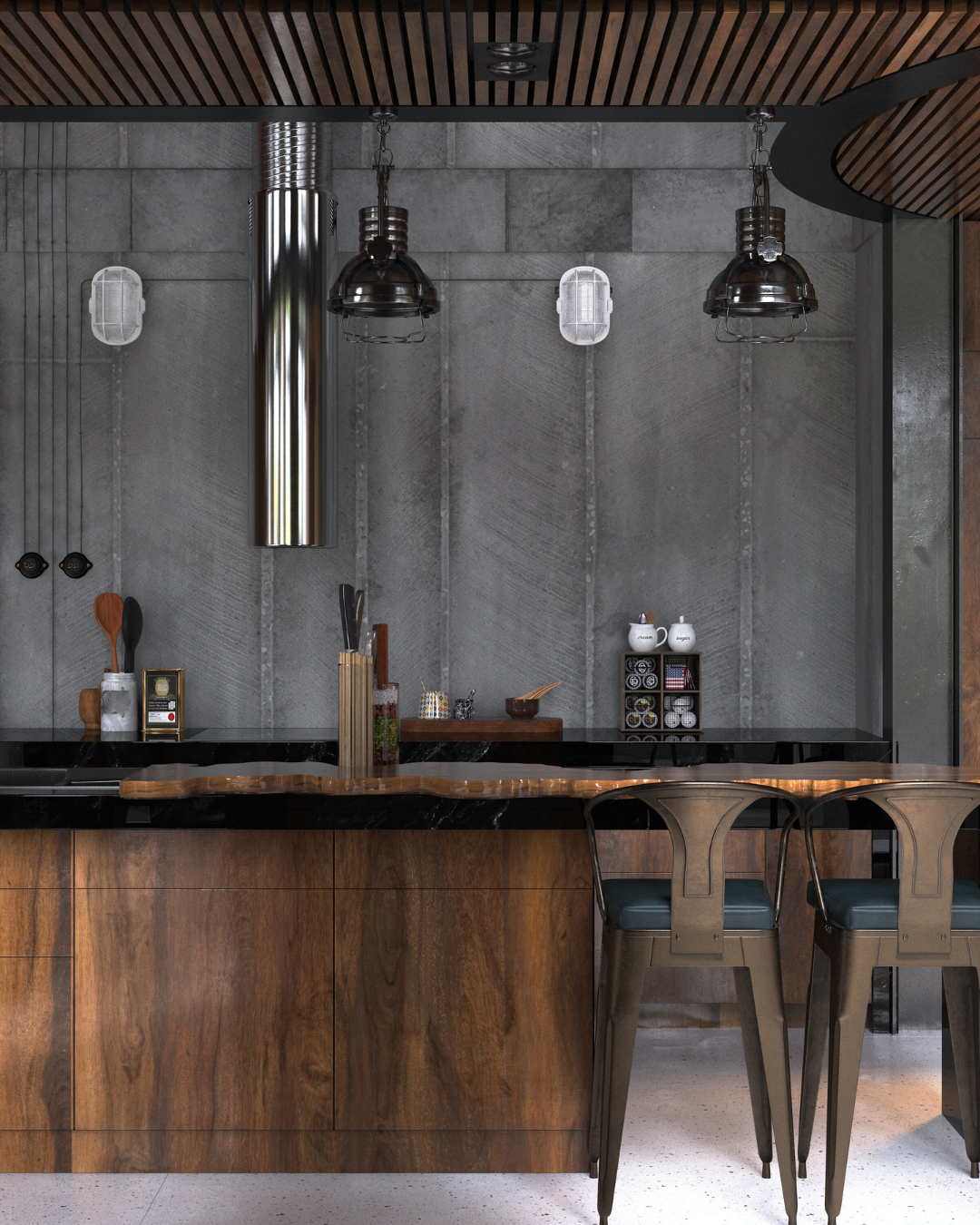How to Mix Modern and Vintage Decor Styles for a Timeless Look

Mixing modern and vintage decor styles can create a unique and inviting space that reflects personal taste. To achieve harmony between these two styles, one must find a balance where the sleek lines of modern decor complement the rich character of vintage pieces. This combination can enhance an interior’s aesthetic while allowing for creativity and personal expression.
Incorporating vintage items, such as an antique chair or a retro lamp, into modern settings can add depth and history. Meanwhile, modern decor elements, with their minimalist appeal, can provide a clean backdrop that highlights these vintage treasures. By thoughtfully blending textures, colours, and shapes, it is possible to create an intriguing juxtaposition that captivates the eye.
Choosing a cohesive colour palette helps to unify the distinct elements of both styles. Whether opting for a muted scheme or bold contrasts, the key is to ensure that the vintage and modern pieces speak to each other. With a careful approach, anyone can master the art of mixing modern and vintage decor, transforming a space into a reflection of both style eras.
Understanding the Fundamentals of Mixing Modern and Vintage Styles
Mixing modern and vintage decor styles requires a clear grasp of each aesthetic and the principles that guide their successful integration. A thoughtful approach balances contrasts while celebrating the unique charm and functionality of both styles.
Defining Modern and Vintage Aesthetics
Modern design typically emphasises clean lines, minimalism, and a neutral colour palette. It often features materials like glass, metal, and concrete. This style prioritises simplicity and functionality, allowing space to feel open and uncluttered.
In contrast, vintage decor encapsulates styles from previous eras, such as mid-century or Art Deco. Vintage pieces boast intricate details, rich materials, and warm tones. They add character and history to a space. Understanding these distinctions helps in blending the two styles effectively.
The 80/20 Rule for Combining Decor Styles
The 80/20 rule is a useful guideline when mixing decor styles. It suggests dedicating 80% of the space to one dominant style and 20% to the other. This creates a cohesive look while allowing for the infusion of unique vintage elements without overwhelming the modern base.
For example, one might choose modern furniture as the primary design feature, complemented by carefully selected vintage accessories. This creates harmony while showcasing individual pieces’ charm and story. By adhering to this rule, one can maintain visual interest and cohesive design.
Importance of Form and Function in Design
In any design, form and function are crucial. Modern designs prioritise functionality, ensuring that furniture and decor serve a practical purpose. Vintage pieces, while often less utilitarian, can contribute to a design narrative when selected thoughtfully.
When mixing styles, it’s essential to consider how each piece interacts within the space. For example, a sleek modern sofa paired with a vintage coffee table can enhance both aesthetics. Each element should support not only the visual appeal but also the functional requirements of the space, leading to a balanced design.
Selecting and Integrating Key Decor Elements
Successfully mixing modern and vintage decor styles involves careful selection and integration of key elements. By choosing the right furniture, lighting, and accessories, a cohesive and visually pleasing space can be achieved.
Furniture Styles: Blending Old and New
When combining furniture styles, it is essential to balance modern pieces with vintage antiques. A contemporary sofa can serve as a comfortable centrepiece when paired with an antique coffee table or side chairs. This juxtaposition creates visual interest and showcases the character of both styles.
Furniture Considerations:
- Scale and Proportion: Ensure that the sizes of modern and vintage items complement each other. A large, ornate antique piece may overwhelm a sleek modern sofa.
- Upholstery Choices: Select upholstery that bridges the gap between styles. For instance, a modern sofa upholstered in a vintage fabric can harmonise the two worlds.
- Mixing Textures: Combine various materials, such as a wooden antique dining table with metal modern chairs, to enhance depth in the design.
Accentuating with Lighting and Textures
Lighting plays a crucial role in defining the mood of a space. Mixing light fixtures can highlight the distinct features of both styles. Consider using pendant lighting with an industrial feel to illuminate vintage furniture.
In addition, layering textures enhances the overall aesthetic. A vintage rug can add warmth beneath a modern dining table, tying the room together.
Key Lighting Elements:
- Layered Lighting: Incorporate different light sources, such as floor lamps and table lamps, to create a dynamic atmosphere.
- Statement Fixtures: Choose bold lighting pieces that can act as focal points while complementing existing decor.
Incorporating Statement Pieces and Accessories
Statement pieces are vital for personalising a space. They draw attention and can bridge the vintage and modern styles effectively. An oversized art piece or a unique sculpture can anchor a room’s design. Accessories are equally important. Vintage vases or modern sculptures can be used to create visual dialogue.
Accessory Tips:
- Balanced Display: Aim for symmetry when placing accessories. Pairing a modern piece on one side with a vintage item on the other maintains balance.
- Layering Textiles: Use cushions and throws in a mix of patterns and materials to reflect both styles. For instance, modern geometric prints can work well alongside vintage floral designs.
By thoughtfully selecting and combining these elements, a harmonious blend of modern and vintage decor can be achieved.
Harmonising Colours and Materials for Cohesion
Achieving harmony in a space requires careful consideration of both colours and materials. A cohesive aesthetic blends modern and vintage elements while respecting the unique characteristics of each style.
Crafting a Complementary Colour Palette
A well-defined colour palette is essential for merging modern and vintage styles. Rich colours can imbue depth, while a neutral colour palette provides a calming backdrop.
- Bold Accents: Incorporate deep blues, emerald greens, or burgundies in modern furniture or vintage-inspired textiles.
- Soft Neutrals: Use shades like beige, grey, or soft whites for walls to allow more vibrant pieces to stand out.
This combination creates a balanced look. Metallic finishes, such as brass or brushed steel, add a contemporary touch while enhancing the vintage charm.
Mixing Materials: Metal, Glass, and Natural Textiles
The interplay of different materials fosters interest and texture. Modern decor often showcases sleek glass and metal, while vintage design favours natural materials.
- Glass Elements: Incorporate sleek glass tables or lighting fixtures to introduce a clean, airy feel.
- Metallic Touches: Use antique accessories in brass or copper to maintain a vintage ambience.
Natural textiles, like linen or wool, can bridge the gap between both styles, offering comfort paired with sophistication. Layering these materials skillfully helps create a unified yet dynamic space.
Incorporating Vintage and Modern Influences with Flair
Combining vintage and modern decor can create unique and inviting spaces. By thoughtfully selecting accent pieces and incorporating personal elements, one can achieve a harmonious blend that showcases both styles effectively.
The Role of Contemporary Art and Accessories
Incorporating contemporary art is vital for a modern twist in vintage settings. Large-scale artworks can serve as focal points, contrasting beautifully with vintage pieces like a console table or armchair. Accessories such as sleek vases or geometric sculptures add a contemporary touch.
Tips for selecting art and accessories:
- Choose bold colours or abstract forms to energise the space.
- Position artwork at eye level to enhance visibility and impact.
These selections help create visual interest while maintaining a balance between eras.
Seeking Inspiration: Flea Markets and Family Heirlooms
Flea markets are treasure troves of unique vintage accessories that can make a modern room feel distinct. Exploring these markets can uncover one-of-a-kind finds like classic mirrors or retro light fixtures that enhance the aesthetic. Family heirlooms, such as vintage rugs or ornate picture frames, can also provide personal narratives within the decor. When integrating these items, consider their story and how they reflect individual tastes.
Things to keep in mind:
- Assess condition and craftsmanship to ensure longevity.
- Blend these items seamlessly with contemporary furniture for a cohesive look.
The Art of Upcycling and Personalisation
Upcycling vintage pieces is an innovative way to bridge modern and vintage styles. Transforming an old table with a fresh coat of paint or reupholstering chairs can introduce contemporary simplicity while preserving historical integrity. This practice encourages creativity and sustainability, allowing individuals to tailor items to fit specific design visions.
Creative upcycling ideas include:
- Converting a vintage dresser into a chic TV stand.
- Using old suitcases as unique side tables.
Each personalised piece contributes to a home that tells a story and showcases distinctive craftsmanship.


